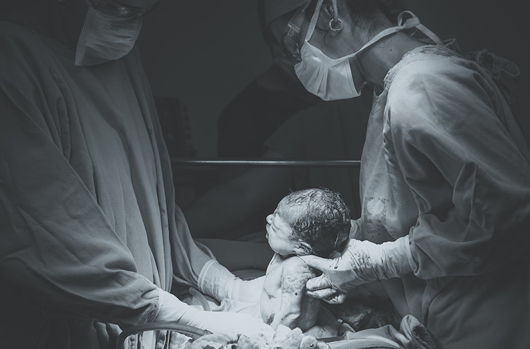The birth of a child is a momentous and joyful event, yet it’s crucial for expecting parents to be aware of the potential risks associated with childbirth, including birth injuries. These injuries can vary widely in severity and impact, affecting both the physical health and emotional well-being of the newborn and family. Understanding the nature of these injuries, their causes, and potential prevention strategies is vital for any parent preparing for childbirth.
This article aims to equip expecting parents with essential knowledge about common birth injuries, offering insights into how they can be identified, managed, and possibly prevented. Covering a range of topics from cerebral palsy to less common complications, this guide seeks to provide a comprehensive understanding of what parents should know about birth injuries. With the right information and preparation, parents can better advocate for the health and safety of their newborn during the crucial moments of childbirth.
1. Understanding Birth Injuries: An Overview
Birth injuries can range from minor bruises to more severe conditions that may have long-term effects. Some injuries are preventable, while others can occur despite optimal care. It’s important for parents to know that birth injuries are not always a result of medical negligence. Being informed about these injuries, their causes, and potential outcomes enables parents to better understand and participate in the birthing process, advocating effectively for their baby’s health.
2. Cerebral Palsy: A Common Birth Injury
Cerebral palsy, a neurological disorder caused by brain damage, is one of the more serious conditions resulting from birth injuries. It can stem from various factors, including complications during labor and delivery such as oxygen deprivation. Parents should be aware of cerebral palsy’s signs, which generally appear in early childhood, and seek prompt medical advice if concerns arise. In some cases, cerebral palsy may be linked to medical negligence during childbirth. Families affected by such situations often explore cerebral palsy settlements as a means to secure financial support for long-term care and treatment. These settlements can provide crucial resources for medical expenses, therapy, and other necessary accommodations for a child with cerebral palsy. It’s important for parents facing this challenging situation to consult with legal professionals specializing in birth injuries to understand their options and rights.
3. Brachial Plexus Injuries: Causes and Prevention
Brachial plexus injuries can lead to temporary or permanent arm weakness. They often occur during difficult deliveries, such as in cases of shoulder dystocia. Preventative strategies include careful monitoring during pregnancy and considering alternative delivery methods if risks are identified. Early physical therapy can be beneficial for recovery, and in some cases, surgery may be required. Parents should discuss potential risks and preventative strategies with their healthcare provider, especially if they have a history of complicated deliveries.
4. Fractures During Birth: Understanding the Risks
Fractures, particularly of the clavicle, can occur during birth, especially in difficult deliveries or with larger babies. Knowledge of risk factors, such as maternal diabetes or a history of large babies, can help in planning a safer delivery. In most cases, fractures heal quickly with proper care and minimal intervention. Parents should be educated on how to handle and care for their baby to aid in healing and prevent discomfort.
5. Perinatal Asphyxia: Identifying and Addressing the Issue
Perinatal asphyxia can lead to serious complications, including brain damage. It’s crucial to monitor the baby’s health during labor closely. Advanced planning for high-risk deliveries and immediate medical intervention, if asphyxia occurs, can mitigate potential long-term effects. Parents should be aware of the signs of distress during labor and understand the importance of immediate medical response to reduce the risk of asphyxia.
6. Facial Paralysis and Birth Trauma
Facial paralysis can result from pressure on the baby’s face during delivery. While most cases resolve without intervention, some may require physical therapy. Parents should be informed about the possibility of facial paralysis, especially in cases of instrument-assisted deliveries, and understand the care needed if it occurs. This knowledge helps parents to quickly identify the issue and seek appropriate care.
7. The Impact of Infections on Newborns
Maternal infections can lead to complications during birth and after. Regular prenatal check-ups help in identifying and treating any infections early. Parents should be aware of the signs of infection and understand the importance of prenatal care in preventing transmission to the baby. This includes following healthcare advice on vaccinations and treatments during pregnancy.
8. Coping with the Emotional Impact of Birth Injuries
The emotional impact of a birth injury can be profound. It’s important to seek support, whether through counseling, support groups, or connecting with others in similar situations. Addressing the emotional needs of the entire family is crucial in dealing with the aftermath of a birth injury. Parents should not hesitate to seek help and utilize available resources for emotional support.
9. Legal Considerations and Birth Injuries
If a birth injury is suspected to be due to medical negligence, it’s important to understand your legal rights. Consulting with a legal professional specializing in birth injuries can provide clarity and guidance. They can help in determining whether there is a case for malpractice and the best course of action. Parents should document all medical care and maintain records, which can be crucial in legal proceedings.
10. The Role of Prenatal Care in Preventing Birth Injuries
Consistent and comprehensive prenatal care plays a vital role in preventing birth injuries. Regular check-ups and monitoring can help identify potential risks early on. Expectant mothers should follow medical advice, attend all prenatal appointments, and maintain a healthy lifestyle to minimize risks. Discussing birth plans and potential interventions with healthcare providers can also help in preparing for a safe delivery.
The Final Word
In conclusion, while the possibility of birth injuries can be concerning, informed, and prepared, parents can navigate this aspect of childbirth with greater confidence and peace of mind. Understanding the types of birth injuries, recognizing their signs, and knowing how to prevent and address them are crucial. Proactive communication with healthcare providers and seeking support when needed are key to ensuring a safer and more positive childbirth experience.




